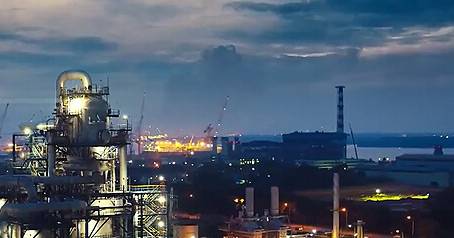Dec . 14, 2024 09:15 Back to list
Understanding the Basics of PVC Pipe Fittings for Various Applications
Understanding PVC Pipe Fittings A Comprehensive Guide
When it comes to plumbing and construction, PVC (Polyvinyl Chloride) pipe fittings play a crucial role in ensuring a seamless and efficient system. These fittings are essential components that connect various sections of piping and facilitate the flow of water, gas, or other materials. In this article, we will delve into the types, advantages, uses, and installation aspects of PVC pipe fittings, providing you with a comprehensive understanding of this essential plumbing material.
Types of PVC Pipe Fittings
PVC pipe fittings come in various shapes and sizes, designed to serve different functions. Here are the most common types
1. Elbows These fittings allow for directional changes in piping, typically at 90 or 45 degrees. Elbows are vital for navigating around obstacles and ensuring pipes can connect at desired angles.
2. Tees Shaped like the letter T, these fittings enable branching off from a single pipe into two directions. Tees are commonly used in water supply and drainage systems.
3. Couplings Couplers are straight fittings that connect two sections of pipe together. They are crucial for extending pipe lengths or repairing broken sections.
4. Reducers These fittings facilitate the transition between pipes of different diameters. Reducers are essential for controlling flow rates and pressures within a system.
5. Caps Used to seal the end of a pipe, caps help prevent leakage and blockage in the plumbing system.
6. Adapters They connect pipes of different materials or sizes, such as PVC to metal. Adapters are incredibly useful in mixed-material projects.
Advantages of PVC Pipe Fittings
PVC pipe fittings offer numerous advantages that make them a popular choice among builders and plumbers
- Durability PVC is resistant to corrosion, chemicals, and UV rays, ensuring a long lifespan even in harsh environments.
- Lightweight Compared to metal fittings, PVC is significantly lighter, making transportation and installation much easier.
- Cost-effective The affordability of PVC fittings makes them an attractive option for both DIY projects and large-scale installations.
- Easy to work with PVC fittings can be cut and joined using relatively simple tools and methods, such as solvent welding or mechanical joining.
pvc pipe fitting

- Low maintenance Once installed, PVC pipe fittings require minimal maintenance, reducing the overall cost of ownership.
Applications of PVC Pipe Fittings
The versatility of PVC pipe fittings allows them to be used in various applications, including
- Residential plumbing Commonly used in water supply lines, drainage systems, and venting, PVC fittings are a staple in home plumbing.
- Irrigation systems PVC fittings are ideal for agriculture and garden irrigation, allowing for efficient water distribution.
- Industrial uses Many industries utilize PVC fittings in chemical processing, waste management, and other applications due to their chemical resistance.
- Electrical conduits PVC is often used to protect electrical wiring systems, with specific fittings designed to house and route cables.
Installation of PVC Pipe Fittings
Installing PVC pipe fittings is a straightforward process, but certain steps should be followed for optimal results
1. Measure and cut Precisely measure the length of the pipe, and use a PVC cutter to make a clean cut. Ensure the edges are smooth to avoid leaks.
2. Dry fit Before applying any adhesive, dry fit the fittings to ensure all pieces connect correctly.
3. Apply solvent cement Use a suitable PVC solvent cement to bind the pipe and fitting. Apply cement to both the pipe and the fitting for a secure bond.
4. Assemble quickly Once cement is applied, insert the pipe into the fitting with a twisting motion to spread the cement evenly. Hold it in place for a few seconds to allow it to set.
5. Allow time to cure Follow the manufacturer’s recommendations for curing time before pressure testing the system.
Conclusion
PVC pipe fittings are indispensable in modern plumbing and construction. Their variety, durability, and ease of use make them an ideal choice for a wide range of applications. Whether you are embarking on a DIY home plumbing project or working in industrial settings, understanding the types and applications of PVC fittings will help ensure that your installations are efficient and effective. With the right knowledge and tools, anyone can successfully navigate the world of PVC fittings, ensuring a lasting and reliable plumbing system.
-
Durable Glossy PVC Rigid Sheet | Premium High-Shine Panels
NewsAug.26,2025
-
Durable PP Rigid Sheet: Lightweight, Chemical Resistant Solutions
NewsAug.21,2025
-
PVC Grey Sheet for Extraction: Chemical Resistant & Durable
NewsAug.19,2025
-
Durable PVC Pipe Fittings for Plumbing & Irrigation Needs
NewsAug.18,2025
-
HDPE Steel Belt Reinforced Spiral Corrugated Pipe | High Strength
NewsAug.17,2025
-
HDPE Pipe Fittings: Durable, Leak-Proof Solutions
NewsAug.16,2025

